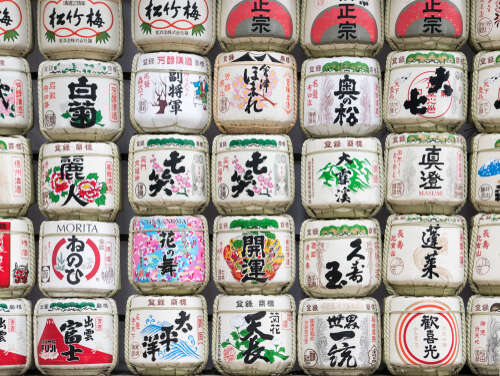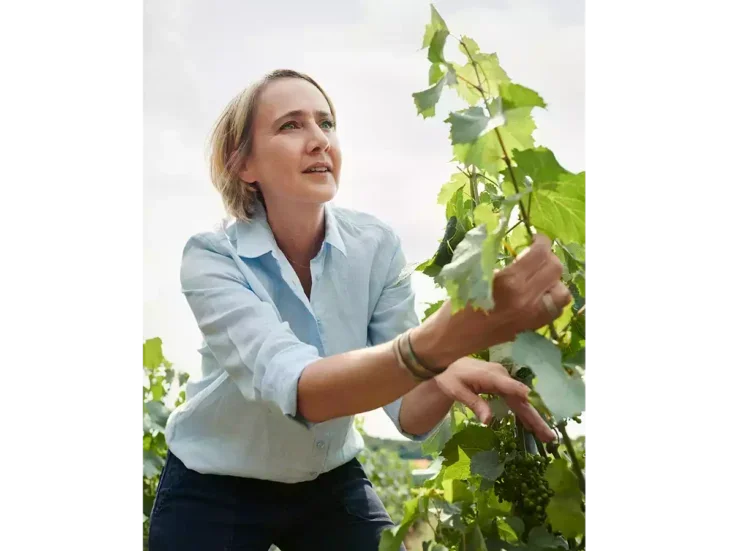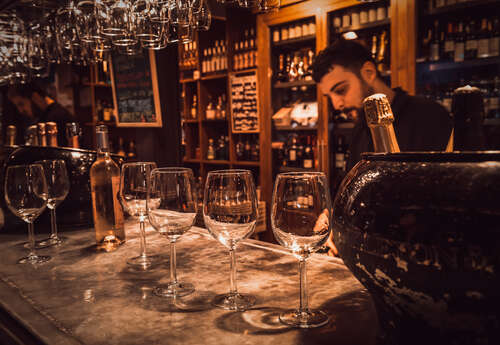
In the second of his reports on Japanese wine and sake, Jim Clarke explores sake terroir and the reasons behind—and limits to—the recent boom in sake GIs.
While many sake GIs have—like Japan’s wine GIs—been birthed at the prefecture level, it speaks to sake’s deep history that although its character is in many ways much further removed from its terroir, the sake world has been much more prepared to pinpoint its GIs more precisely. Sake’s first GI, Hakusan City, was created in 2005, and included only five breweries. For ten years it was an outlier, but 2015 and the creation of a national sake GI, Nihonshu or “Japanese Sake,” has stimulated a sake GI boom.
The national GI’s role was more-or-less to maintain Japanese sake’s reputation as a premium product in the face of rising bulk sake production in other parts of Asia. But inspiration for regional GIs largely came from wine. Yazaemon Kojima, 23rd-generation owner of Toko Brewery in Yamagata, says they and other Yamagata breweries were spurred to create a GI by the conversations they were having abroad. “So many people wanted to understand sake like wine,” Kojima says. “Regionality was more important there than in the domestic market.” He says that only more recently have domestic sake drinkers begun to talk in regionality terms.
Yamagata: Easily defined
In 2016 Yamagata gained its GI. Yamagata’s sakes already had a reputation for a signature clear, crisp style and a tasting approval process, so it made it relatively easy to define the prefecture’s sakes in a way the Japanese Tax Agency could validate. Around the same time Master of Wine Kenichi Ohashi hosted a panel at a conference in Yamagata on GIs, and many brewers from all over the country left the conference with a bee in their bonnet. Since 2016 seven more sake GIs have been approved, and Tochigi and other prefectures have applications in the works. Some are prefecture-wide, and some are more geographically limited. Nadagogo, for example, embraces just five villages around Kobe where brewers have access to the local water, known as miyamizu, which has made the area famous for sake production since the early 19th century.
The case for local rice
It’s actually typical of these earlier GIs that the requirements stipulate the brewery’s location and that the local water source be used, but don’t actually require the use of local rice. Wine drinkers sometimes have a hard time with that, but rice travels much more easily than grapes. Sake expert John Gauntner says it was typical to use local rice and local rice varieties until thirty or forty years ago, when the popularity of Yamada Nishiki rice led breweries to source from further afield. Today many brewers are focusing on local rice and traditional rice varieties again. Kojima says that 90% of their rice is local, favoring in particular the Dewasansan strain historical to the area. He and other Yamagata brewers are also highlighting locally developed yeast strains.
The newest sake GIs have incorporated more specific requirements into their regulations, including local rice and traditional rice varieties as well as specific yeast strains; some GIs have undergone revision along the same lines. It seems the government was more careful not to leave out brewers at first, and now are accepting that a precise definition gives the branding more consistency.
Branding or terroir statement?
Despite this added precision at this point sake GIs are definitely an act of branding more than a statement of terroir. This shows in a few ways. It’s notable that prefectures with big reputations in the sake world have been slow to get on board. Niigata, for example, is home to more sake breweries than any other prefecture, but has yet to file an application for a GI. The feeling seems to be that they already have good name recognition for the region, so the hassle of the GI application wouldn’t be worthwhile.
Gauntner is supportive of the GI concept, but feels that soon prefectures will start seeing diminishing returns on the publicity that comes with announcing a new sake GI. In addition, he wonders how prefectures can describe their sakes in terms that make their GI sound distinct from the competition. “There are 47 prefectures,” Gauntner says. “I think 60 percent of them have a regional style that can be identified with them, but within every prefecture not every producer will conform with that style.” Indeed, not even every sake within a given brewery will necessarily receive GI status. This is not necessarily a problem, though; plenty of Sonoma wineries also make North Coast or even California-appellated wines.
What is sake terroir?
The growth of GIs underscores the question of what is or what makes up sake terroir. Confining the discussion to the natural environment, Kojima points out that Yamagata’s colder climate affects what rice grows well there, makes for heavy winter snowfall which melts into good, soft water, and encourages a long, slow fermentation (sake brewing is traditionally done only in the cooler months of the year). But beyond that the sake brewer has so many variables they can influence that the same rice and water and even yeast can yield very different sakes in different hands. In the past diversity was perhaps kept in check by the brewers’ guilds, which jealously guarded local techniques and traditions, but these days technical knowledge is shared openly. So there is a certain arbitrary nature to the style that becomes the core of a given GI. However, it seems more and more brewers are feeling confined by the semaibuai system of classifying sake by the milling ratio, a system instituted in the 1990s. While it may be a patchwork, characterized by the exception as much as by the rules, a regional, prefecture-by-prefecture approach may provide a legitimate framework to talk about sake.






